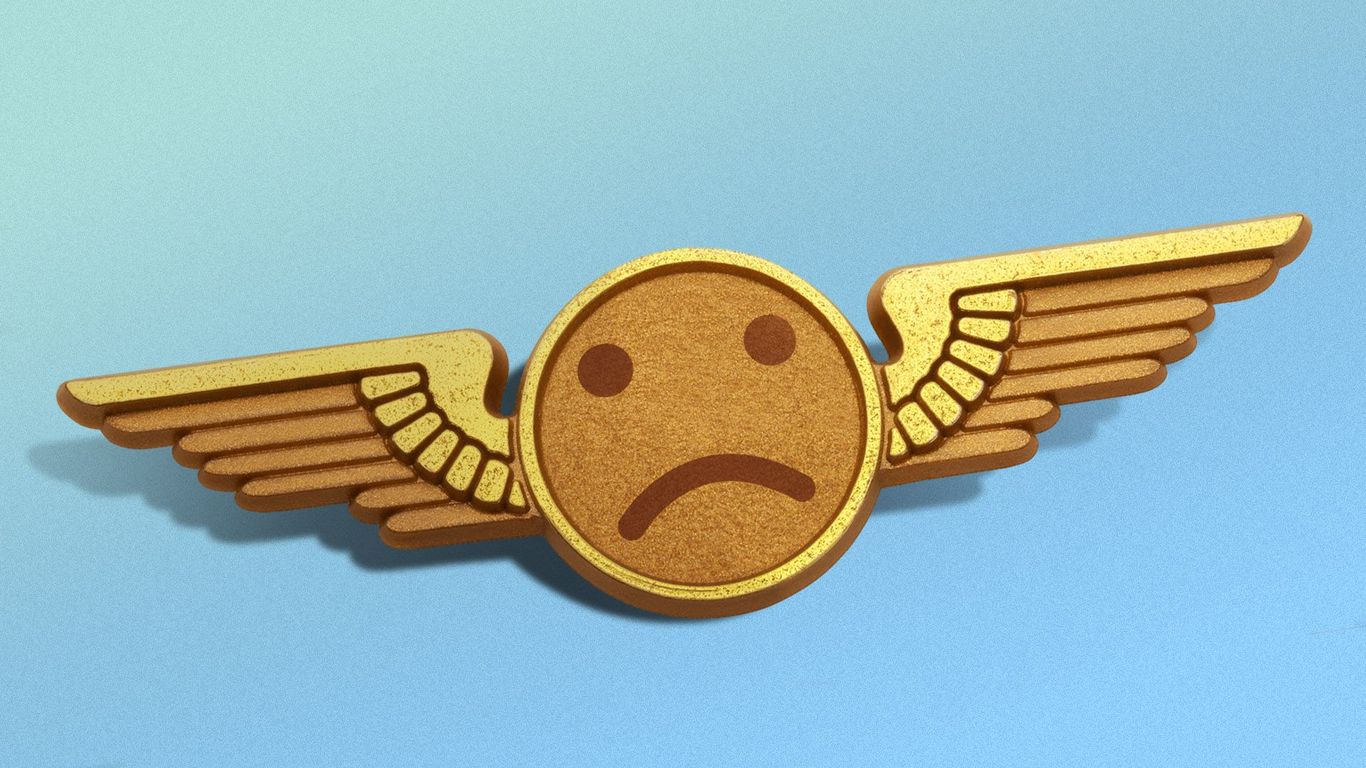
New restrictions at international border crossings, coupled with faltering COVID-19 immunization efforts, have diminished hopes for a significant air travel recovery in 2021.
Why it matters: For global aviation, which had its worst year in history in 2020, misery is likely to continue, hampering a broader economic recovery.
- Predictions that air travel would recover to 50% of its pre-pandemic level by 2021 now seem daunting, industry officials warn.
- “There is a recovery, but it is a much smaller recovery,” Brian Pearce, chief economist at the International Air Transport Association, told reporters this week.
- “What we’ve seen in recent weeks is that governments have a much, much tougher and more careful approach.”
- His worst-case scenario: Air travel in 2021 is only 38% of its 2019 level.
The big picture: The world is more trapped today than at any point in the past 12 months.
- New, potentially more contagious strains of the coronavirus have led to new limits on cross-border travel and a dizzying array of quarantine restrictions.
- While the advent of new vaccines is good news for air travel, their slow rollout means herd immunity is still a long way off.
An ominous sign: Bookings for future trips were significantly delayed in January, IATA reported.
- “Things are going to get much harder before they get better,” warns aviation consultant Shashank Nigam, CEO of Simpliflying.
- Even countries that vaccinate quickly will keep their borders closed for some time, he predicts.
- Israel, for example, leads the world with 20% of the population fully vaccinated, but last week imposed a ban on international travel to combat rising cases of a rapidly spreading British variant.
- And regional travel bubbles like those between Hong Kong and Singapore or Australia and New Zealand didn’t last long.
Context: The revival that started last summer came to a halt in the fourth quarter as coronavirus cases spread around the world.
- Air travel was down 70% in October, November and December from a year ago.
- For the whole of 2020, passenger demand fell by 66%. Demand for international passengers fell by 75%; domestic demand by almost half.
- Americans who did fly sought sun and beaches: Travel to places like Mexico and the U.S. Virgin Islands dropped the least in December, according to Airlines for America.
- One bright spot: air freight fell by just 10% last year, which kept many airlines afloat.
What they say: “Last year was a catastrophe. There is no other way to describe it,” Alexandre de Juniac, IATA director general and CEO, said in a statement.
- “I don’t think anyone expects a world without COVID-19 anytime soon. Certainly not in the coming months or even within this year. But our ability to manage risk increases as more people are vaccinated and testing capacity grows.”
Airlines say widespread testing, not border restrictions, will be able to safely resume international air travel.
- Nigam’s company is introducing a service called Fit2Fly.travel that connects airlines and testing labs so that passengers can schedule a COVID-19 test as part of the booking process.
- New smartphone apps such as CommonPass and IATA’s Travel Pass can help validate passengers’ health status so governments can safely reopen borders.
Yes but: When it comes to domestic flights, US airlines are urging the Biden government not to require pre-departure tests as they would limit access to travel for low-income and rural communities.
What to watch: For airlines, the outlook for the next two years is uncertain and will depend on how effectively vaccines and testing can prevent the spread of new variants.
It comes down to: Aviation is not likely to return to pre-pandemic levels until 2023 or 2024.